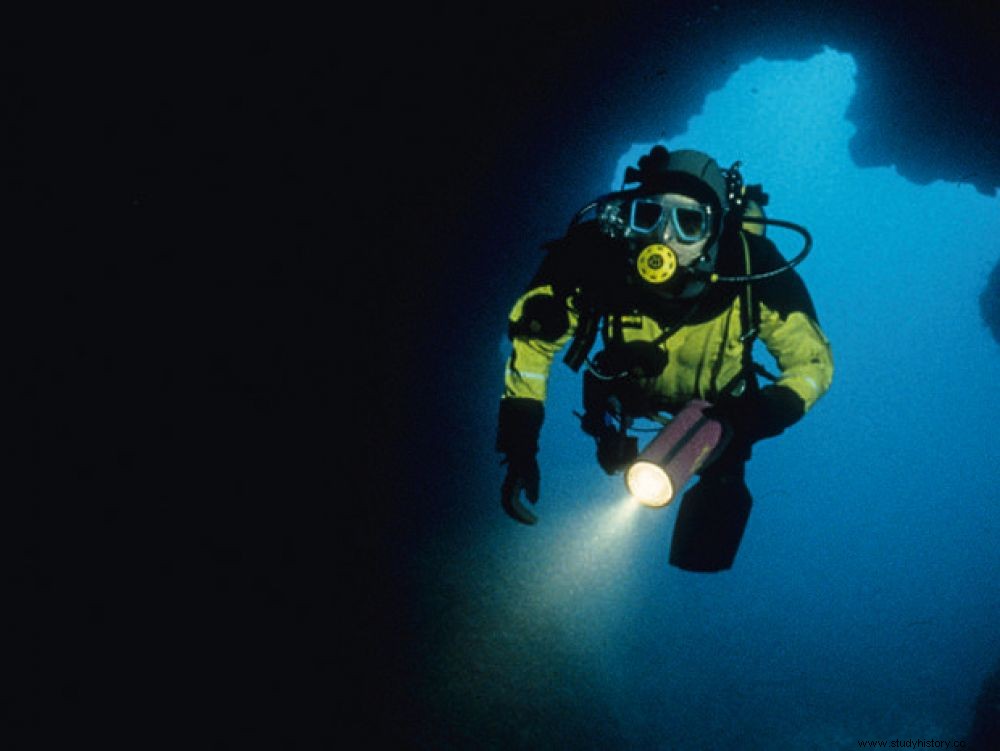Discovered in 1991, this cavern immersed in the creeks of Marseille is home to superb prehistoric paintings. Digital readings can be made available to scientists and the general public.

The cave is immersed in the Calanque de la Triperie. Topographic surveys will be carried out by divers and archaeologists.
On the edge of the Mediterranean, the Cosquer cave and its admirable prehistoric paintings dated from -18,000 to -27,000 years have been visited by specialists for a few weeks. A campaign of 3D surveys has indeed begun there to carry out a complete digital recording of the underwater cavity, prohibited from public access, which contains more than 500 figures including horses, ibex, bison, megaloceros, seals or Pisces. Objective:to digitally conserve this prehistoric treasure threatened by global warming and rising sea levels, and to verify, in the long term, that it does not contain works that are still unknown.
Its only entrance being drowned 37 m deep, the cave nestled in the creeks of Marseille (Bouches-du-Rhône), near Cape Morgiou, was only discovered in 1991 by Henri Cosquer, a professional diver. The emerged part of the cave, where the Paleolithic site classified as a historic monument is located, is only accessible after crossing a narrow submerged tunnel 120 meters long now closed by a steel door. Only small teams of duly authorized experts are authorized to cross it. Thus, since October 2017, archaeologists and divers have undertaken to carry out a very high-precision topographic survey of the places under the leadership of the Regional Directorate of Cultural Affairs (Drac).
A sub-millimeter precision scale
Every day - at least when the weather permits - they explore the cavity for five hours, the maximum time allowed for safety reasons. Three or four divers and engineers enter the main room (55 m by 44 m), then the second (45 m by 15 m). "These digital readings can be made available to scientists with a quality of reproduction identical to the original" , explains Xavier Delestre, regional curator of archeology, who oversees the operation. Experts have so far divided these missions into two phases. "A first part of the 3D scanner surveys will have a centimeter mesh. But for the parietal works, the precision scale will be sub-millimeter, with photogrammetry" , adds Yves Billaud, researcher at the Department of Underwater and Underwater Archaeological Research (Drassm), involved in this intervention.
The images obtained at the end of this program, which should continue for a good part of 2018, will also serve as a support for media coverage operations aimed at the general public. "A reflection is currently underway to eventually present this set in Marseille itself, in a form that has not yet been defined" , says Xavier Delestre.
